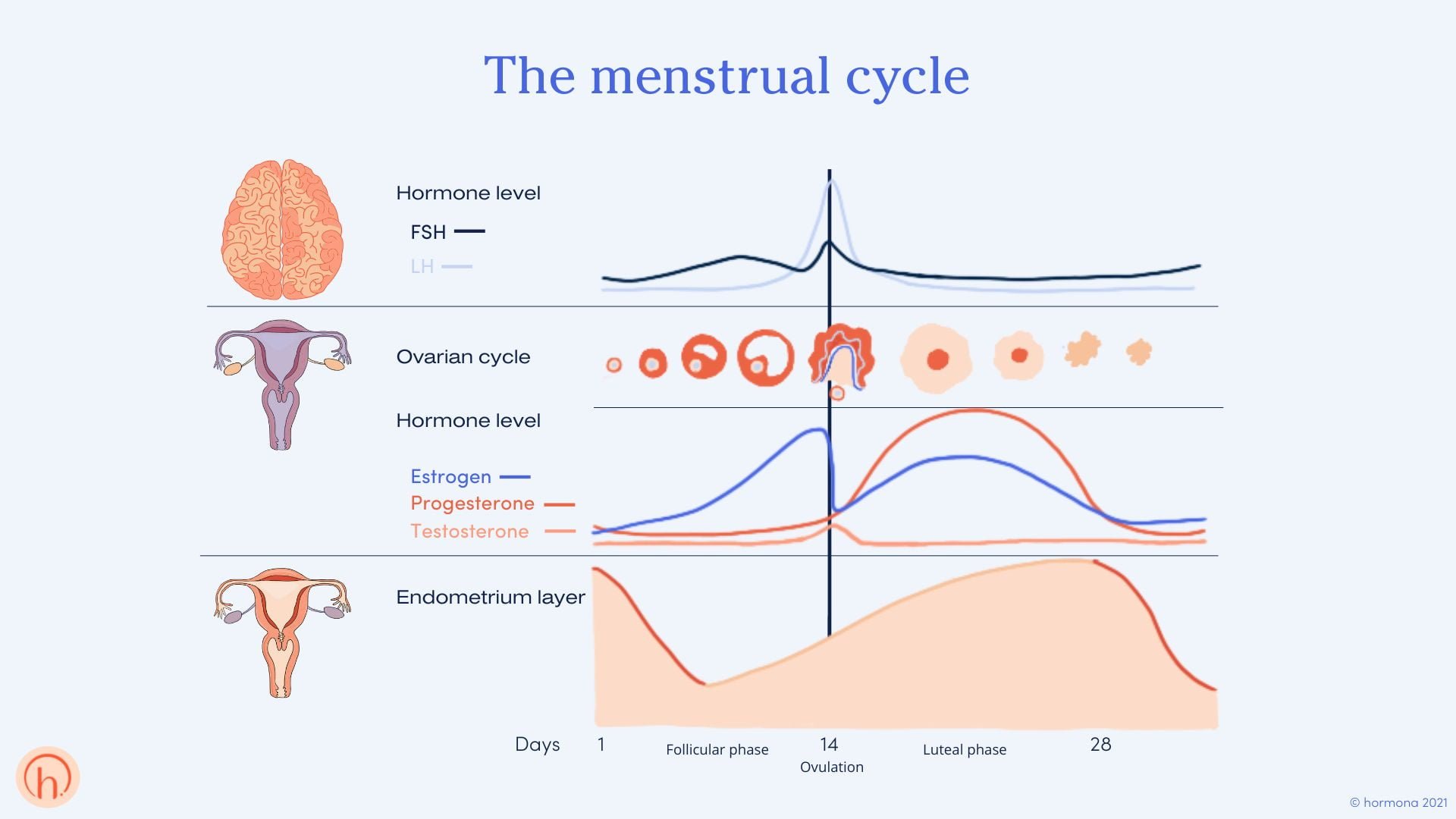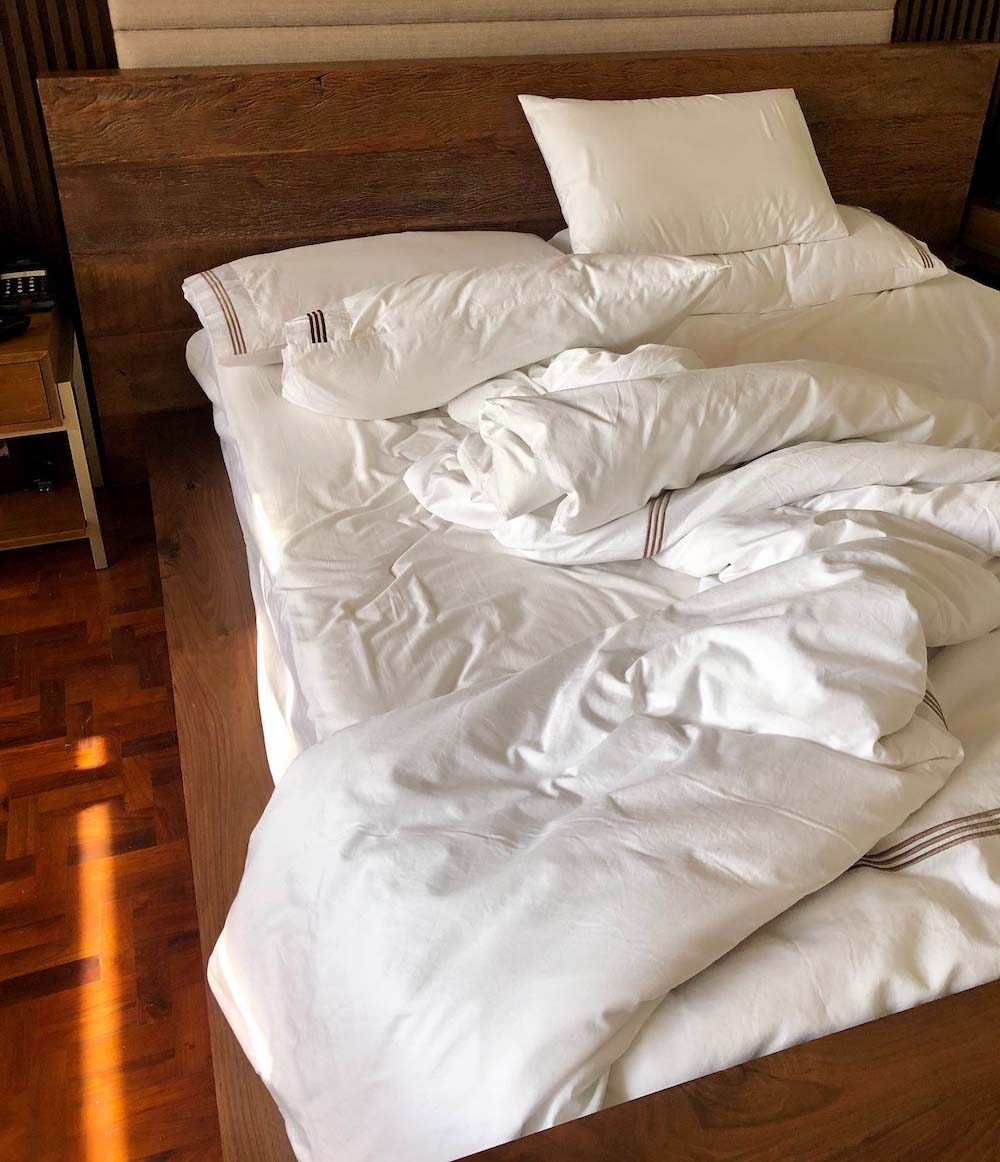I’m sure by now you have heard of female hormones (but totally fine if you haven’t!). Today we are going to have a look at what the female hormones are, what they do and why are important.
What are the female hormones?
Hormones are often referred to as “chemical messengers”. They travel through the blood and send messages to different parts of the body. Sex hormones are a subset of hormones that are important for sexual development and reproduction.
There are four main female hormones involved in the menstrual cycle. They are estrogen, progesterone, luteinizing hormone (LH), and follicle-stimulating hormones (FSH). These four hormones all work together to regulate the menstrual cycle. Estrogen and progesterone also have a lot of other functions in the body.
The diagram below shows the changes in hormone levels through the different phases of the menstrual cycle.

Where are the female hormones produced?
Estrogen and progesterone are mostly produced in the ovaries in premenopausal women. In men and post-menopausal women, it is the fat tissue and adrenal glands that produce estrogen, but at much lower levels than the ovaries. The placenta also produces estrogen during pregnancy.
LH and FSH are produced in the pituitary gland in the brain. They travel through the blood to the ovaries and coordinate some of the functions of the ovaries.
What do the female hormones do?
Estrogen
Estrogen is one of the female sex hormones. It also helps to coordinate puberty, our periods, ovulation, pregnancy, and menopause.
Puberty
The increase in estrogen during puberty is what drives the development of female bodies from girls into adult women. We call this “secondary sexual development”.
The stages of puberty in people producing estrogen include the development of breasts, pubic and underarm hair growth, increase in body fat (and redistribution of body fat towards the hips and thighs), growth spurt, the maturation of the internal reproductive organs (ovaries, uterus, and vagina) and the beginning of the menstrual cycle.
Menstrual cycle
Estrogen is one of the key players in the coordination of the menstrual cycle. It increases during the second half of the follicular phase and is involved in triggering the LH surge that sends the signal for ovulation to occur.
Estrogen then increases again during the luteal phase of your cycle but to a lesser degree than progesterone.
Pregnancy
During pregnancy, estrogen plays a role in getting the body for breastfeeding. Breastfeeding lowers estrogen levels in the body and can prevent ovulation from occurring. In this way, some women can use breastfeeding as a contraceptive (birth control). It is a little more complicated than just assuming you can’t get pregnant if you are breastfeeding though. This article about non-hormonal birth control has a bit more information if you are interested.
Menopause
Dropping estrogen levels is the defining feature of menopause. This is because the number of eggs in the ovaries is diminishing which means there are fewer follicles (groups of cells with an egg in the middle) available to produce estrogen. The low estrogen levels are what give the symptoms of menopause that some women experience.
Other functions of estrogen
There are also other parts of the body that are affected by estrogen that is not specific to women. These include the heart and blood vessels (cardiovascular system), skin, hair, muscles and bones, brain, and urinary tract.
Estrogen is also involved in regulating how interested we are in sex (libido). Higher estrogen levels are associated with higher libido which is why women often feel like having sex more around the time of ovulation than at other points in their cycle.
Progesterone
Progesterone is the other female sex hormone. It is produced by the corpus luteum in the ovaries after ovulation. It is the dominant hormone in the second half of the menstrual cycle (luteal phase). The placenta also produces progesterone during pregnancy.
What does progesterone do?
Progesterone has several important jobs. It prepares the endometrium (lining of the uterus/womb) each month in case you get pregnant. Progesterone then supports the pregnancy and makes sure your body is getting the right messages, and doesn’t start the next period. It also suppresses estrogen levels after ovulation has occurred.
Progesterone and ovulation
You might have heard of using progesterone to check if you have ovulated. If you have ovulated, then the corpus luteum is left behind in the ovary and produces progesterone. We can then measure the progesterone level during the luteal phase of the cycle to check. If there is no ovulation, there is no corpus luteum and the progesterone levels don’t rise as expected.
Have a look at this article if you want to know more about what happens if the coordination of ovulation is disrupted.
FSH and LH
FSH and LH send signals to the ovaries and coordinate the production of estrogen and progesterone.
LH and FSH in puberty
The pituitary gland produces LH and FSH, beginning at puberty. They then coordinate the production of estrogen and progesterone from the ovaries (especially estrogen).
FSH and LH during the menstrual cycle
FSH is responsible for telling the follicles (small groups of cells with an egg in the middle) in the ovaries to start developing. Lots of follicles develop each month and they start producing estrogen. As they develop further estrogen levels continue to rise throughout the follicular phase of the cycle (first half of the menstrual cycle). One follicle is then “chosen” to be the one that is released during ovulation. The rest then regress and are re-absorbed by the body.
LH is the hormone that gives the signal to ovulate. The LH surge just before ovulation is what triggers the release of the egg from the dominant follicle.
What about testosterone?
We usually think of testosterone as a male hormone, but everyone has testosterone. Men just tend to have more than women. In women, the adrenal glands and the ovaries produce testosterone.
Testosterone in women has several important roles. It is involved with bone strength, muscle strength, and sexual desire (libido). Testosterone also plays a role in the menstrual cycle and regulating our periods but plays a smaller role than estrogen and progesterone.
Things to think about
I hope that you now have a better idea of what your female hormones are and what they do in your body. Hormona is working on tests that you can do to track your hormones and get to know your own body better. The better we understand our bodies, the more empowered we are to make choices about what we do with them.





